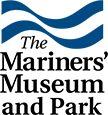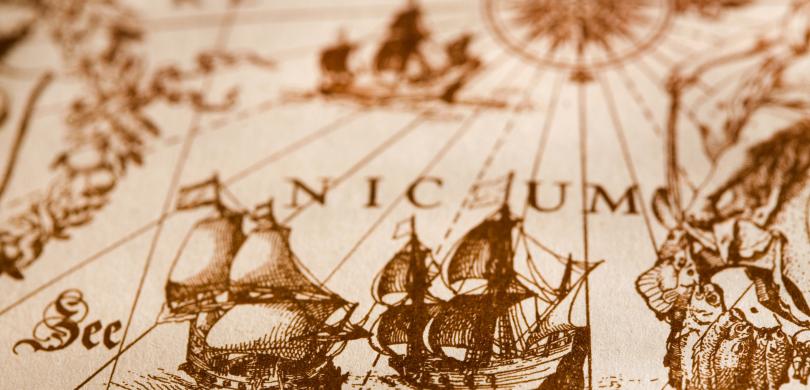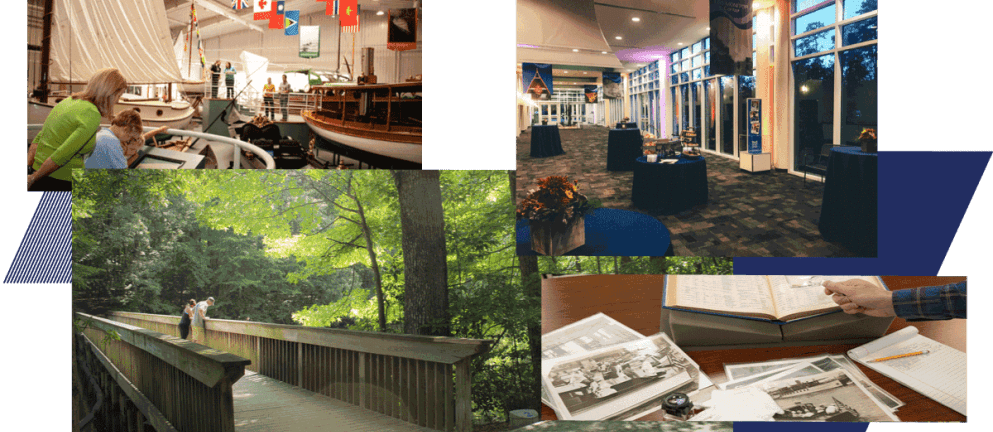
The Mariners’ Museum and Park
Acquia DAM (Widen), including the Assets and Insights applications.

total assets
asset views in the last 12 months
downloads in the last 12 months
The Client
Founded in 1930, The Mariners’ Museum and Park is one of the largest maritime museums in the world. The collection includes 32,000 objects, equally divided between works of art and three-dimensional pieces. The Mariners’ Museum Library and Archives is home to nearly 110,000 books; 800,000 photographs, films, and negatives; and over 1 million pieces of archival material, making it the largest maritime library in the Western Hemisphere.

The Situation
Artifacts from every part of the museum and library collections are digitized and made available in a searchable, online catalog that is accessible anywhere in the world.
The Challenge
The museum’s digital assets were stored on numerous hard drives, CDs, servers, and desktops across the organization. Additionally, individual teams indexed items differently within each source. Marc Marsocci, Director of Digital Services, said that “finding the needed asset was nearly impossible.” It could take days — or even months — to track down a specific file!
Further, items often had to be re-digitized because the existing file simply couldn’t be found. And staff were using low-quality images from the web, because they were unable to find the master file. “This killed me because we have such rich content, but needed a better way of getting it to everyone,” Marc said.
The Solution
The Mariners’ Museum and Park knew this situation was unsustainable, and after a search for the right digital asset management (DAM) system, they selected and implemented Acquia DAM in 2017.
A single source of truth
Acquia DAM eliminated the museum’s siloed storage of digital materials, allowing staff to have a comprehensive understanding of institutional content. Further, consistent and thorough metadata now powers search tools that make asset retrieval a breeze. “We went from a boat with no engine, to a boat with a jet engine,” Marc said.
Ease of use
Acquia DAM’s intuitive user experience has driven successful adoption across the organization. “People are organically using the system,” Marc said. “They have migrated to it because it’s the easiest way to get the assets they need.” He shared that nearly 100% of museum staff use their DAM system! “The more access our staff has to our assets, the stronger we are as an institution.” Additionally, Marc has trained a team of volunteers to help with metadata entry. “It only requires an hour-long training to get them going,” he said. And their support has been incredibly valuable — he estimates that they contribute about 60 hours of manpower every week.
Powerful analytic tools
Data captured in Acquia DAM’s Insights application helps Marc’s team make informed business decisions. For example, asset download activity confirms that their content is being used in nearly every country across the world. “Having these analytics helps us when we are looking for grants and we’re looking for donors — we can show the impact of our work,” Marc said. Download activity also helps them understand content needs and trends. By leveraging these data insights, “we are connecting with the world better than ever before,” Marc said, “and, we are positioned to innovate.”
The Results
Unified processes
Easy, self-serve access to content has combined and streamlined workflows. “DAM is breaking down barriers within the museum,” Marc said. “It’s given us a central point to manage and share assets with less friction. And this allows us to create richer experiences for our visitors, our community, and researchers — both onsite and remotely.”
Enhanced customer service
Acquia DAM has refined and improved workflows across the museum. Image requests that previously took days now take minutes. “Patrons are stunned with the speed of response times!” Marc shared. And photography from events is available within 24 hours, to support donor relations and web activity across their17 websites and robust social media presence. “Anyone working on content can grab it and push it out to the world,” Marc said. “And our development department can now go through and tag donors in the images to connect donors to events and thank them for their involvement.”
Increased revenues
The workflow efficiencies made possible by Acquia DAM have extended the value of the museum’s content through reuse and repurposing. What’s more, staff across teams are now able to spend less time on searching and routine tasks, and more time on work that benefits the organization. For example, the e-commerce and licensing arm of the business now has the support it needs to grow. “We see our revenue increasing 20%,” Marc shared, “and we really do say it’s due to streamlining the process and having DAM in place.